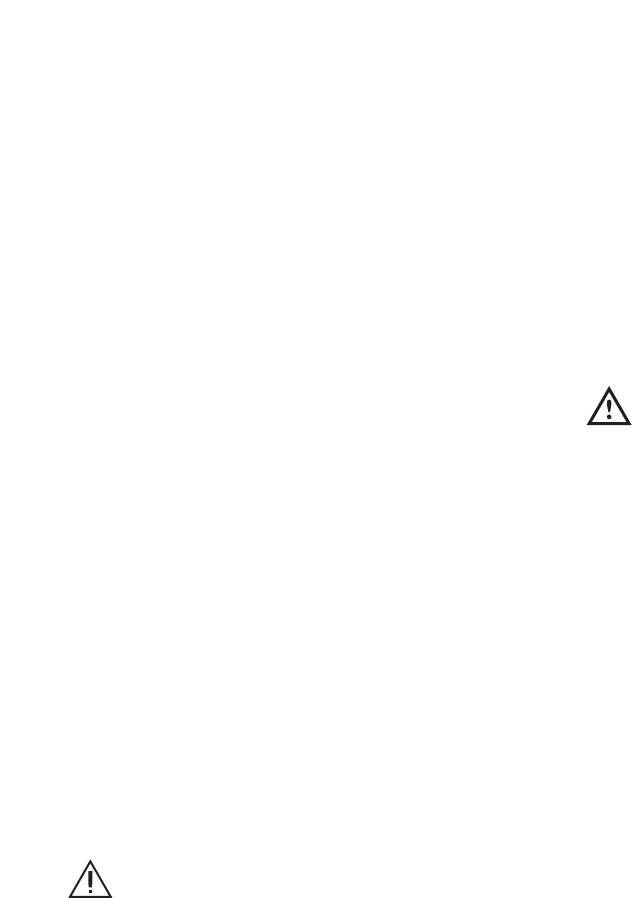
5
OPERATION
Before using
Remove all securing tapes. Wash inside the
appliance with lukewarm water and bicarbonate of
soda (5 ml to 0.5 litre of water).
Do not use soap or detergent as the smell may
linger. Dry thoroughly.
Setting the temperature
The temperature inside the refrigerator is regulated
by a thermostat with 6 temperature positions and an
ÒOFFÓ (O) position.
Position 1 = minimum coldness
Position 6 = maximum coldness
Turn the thermostat dial to the required position.
The intermediate position is usually the most
suitable (3-4).
The thermostat setting can vary as the temperature
inside the refrigeration compartment depends on the
following factors:
Ð room temperature
Ð how often the door is opened
Ð how much food is stored
Ð position of the appliance
Important
If the fridge is not defrosting correctly, it is possible
that because a very low temperature has been
selected, the motor is working continuously, which
prevents the defrost cycle from operating.
To ensure correct defrosting, a lower number should
be selected on the thermostat and you should notice
that the motor cuts out from time to time, which is
correct.
If you wish to return to a lower temperature, turn the
thermostat to a higher number, however you should
turn the setting lower occasionally to allow automatic
defrosting.
The freezer compartment
The four-star freezer compartment is suitable for
storage of commercially frozen food and for freezing
fresh foods.
Freezing fresh food
It is not necessary to adjust the thermostat setting
when freezing fresh food.
In any 24 hours you can freeze up to 3 kg.
Place food to be frozen in the bottom drawer of the
freezer as this is the coldest part.
Important
In the event of a power cut the food in the freezer will
not be affected if the power cut is short and if the
freezer is full. Do not open the door. Should the food
begin to thaw, it must be consumed quickly and must
not be re-frozen .
Thawing
Deep frozen or frozen food, prior to being used, can
be thawed in the fridge or at room temperature
depending on the time available. Small food items
may even be cooked from frozen; in this case
cooking will take longer.
Any frozen food which is allowed to thaw
accidentally should either be eaten as soon as
possible or thrown away. Alternatively, if the food is
uncooked and has not been completely defrosted it
can be cooked and then refrozen.
Meat, fish and fruit should be thawed in the
refrigerator compartment and small pieces of meat
can even be cooked while still frozen, but you must
ensure that it is thoroughly cooked through.
Vegetables should be directly immersed in boiling
water; ready-cooked dishes can be placed directly in
the oven in their aluminium wrapping.
A microwave oven is particularly suitable for thawing
any type of frozen or deep-frozen food: follow the
oven instructions, particularly regarding the
placement of aluminium wrapping or containers in
the oven.
Defrosted cooked food must never be refrozen.
Making ice cubes
The appliance is provided with one or more trays for
ice-cubes trays.
Fill the tray(s) 3/4 full to give the ice space to expand
and place them in the freezer compartment.
To release the ice cubes simply give the tray a slight
twist.
Do not use sharp or metallic instruments to remove
the trays from the freezer.


















